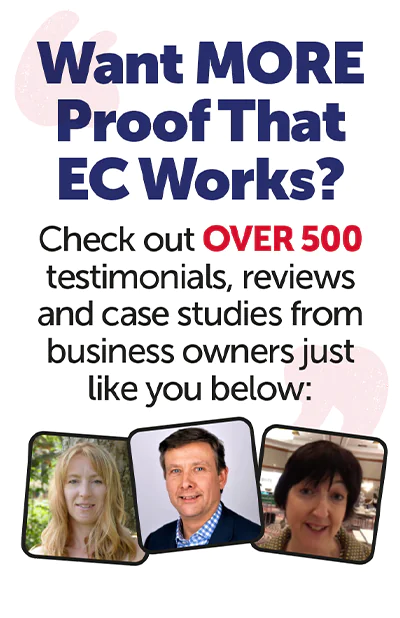
It was Norman Vincent Peale who, in 1952, wrote the book The Power of Positive Thinking. I first read that book in 1968 and it’s formed the basis of my thinking ever since and I would thoroughly recommend that you read it.
Without doubt, using Google AdWords is the single most effective way to get more new customers – as long as you use the medium properly.
Far too many of the AdWords accounts I’ve looked at recently contain too few, if any, negative keywords, and that will, almost inevitably, lead to you giving Google a lot of your hard earned cash for little or no return.
For heaven’s sake, a company that grosses $16.5 billion a quarter (yes a quarter!) doesn’t need any further misspent contributions from the likes of you and me.
Okay, I hear you ask so what does a negative keyword do?
Let’s go back a stage.
Google loves (and rewards) RELEVANCY.
Google wants to provide the best search engine experience in the world and to do that it needs to satisfy people like you and me when we are searching by providing exactly what it is that we’re looking for the second we type a search query and then click on an ad.
So, Google cleverly forces (yes, forces is the correct word) advertisers like you and me to be highly relevant because, if we’re not, we’ll pay a heavy price – something that Nigel often refers to as the GOOGLE STUPIDITY TAX.
Google wants the searcher to see an ad which is highly relevant to the original search query and when that ad is clicked upon it takes the searcher to a highly relevant page on the advertiser’s website.
Therefore, when you set up an AdWords campaign you should choose tightly themed and highly relevant keywords to attract new customers.
But that’s not the whole story…
Let’s take a previous AdWords client of mine – he was a bright chap who sold rehab and fitness equipment online and one of his key products was a foam roller. Apparently (I say apparently as my body hasn’t seen the inside of a gym for a while!) foam rolling is a self-myofascial release (SMR) technique that is used by athletes and physical therapists to inhibit overactive muscles. His definition – not mine. Anyway, he set up an AdWords campaign around the key phrase “foam roller” and created his first ad group called Foam Rollers – his ad (not a great ad) did contain the
phrase “foam rollers” and he sent this traffic to a page on his website (called a landing page) where you could buy a foam roller.
Easy this AdWords stuff, isn’t it?
Sadly not, and that’s when he asked me to take a look at his account to see if I could work out why he had managed to spend £100 in four days and had acquired no new customers – that’s the equivalent to spending (wasting) nine grand a year, by the way!
His ad had over 100,000 impressions (basically Google showed his ad to interested searchers over 100,000 times) and 239 people clicked on his ad.
Remember, a click makes Google money but does not necessarily do the same for you as an advertiser – especially this guy.
Why? Because the vast majority of the people who clicked on his ad weren’t looking for what he was selling.
You see, not everybody sees a foam roller as a piece of gym equipment – the searchers who clicked on his ad did so whilst looking for the following:
- foam paint rollers
- foam roller carpet cleaner
- heated foam hair rollers
By the way, that last two search queries are what we AdWords Geeks call a ‘long tail search’ because they have more than three words in the query. Long tail queries can be very valuable because they demonstrate a very high degree of preciseness in the searcher’s intent and, in that last example, right down to the very model of hair styling system.
So, if you were selling such a product and your carefully constructed keywords and ad captured this searcher and took them to a landing page which showed that very model, then the likelihood of the purchase would be high – that’s RELEVANCY, folks.
So, by simply having the words carpet, cleaner, paint, heated, hair, Caruso (yes Caruso – put everything you can think of in your negatives list!!), styling, system, steam, curlers, free, clips etc. in his negatives list he would have avoided paying the Google Stupidity Tax.
The Scottish Shutter campaign has over 5,000 negative keywords.
When using negative keywords, you should always make sure you add singular and plural versions as well as misspellings.
For example, if you wanted to negate the word “roller” you would also negate “roler”, “rolers”, and “rollers”.
An effective negative keyword list takes time to accumulate, but when you have it, it’s priceless.
See you next month with more hints and tips on getting the best out of AdWords.



